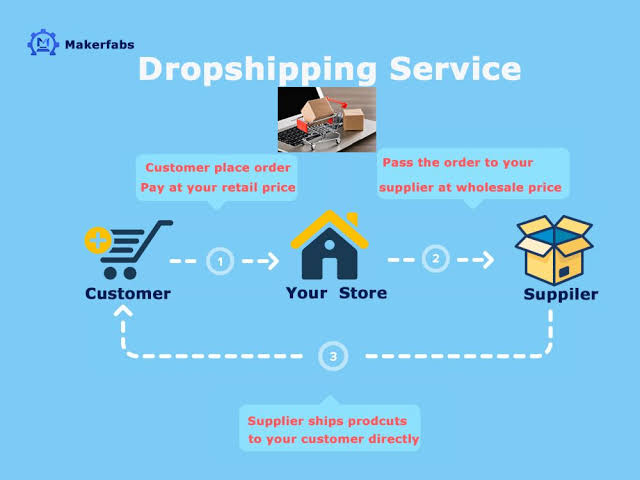Dropshipping is a retail fulfillment method where a store doesn't keep the products it sells in stock. Instead, when a store sells a product, it purchases the item from a third party and has it shipped directly to the customer. Here's a detailed marketing strategy for dropshipping:
1. Niche Selection:
Identify a niche with high demand and low competition. Research trends, customer preferences, and market saturation to find a profitable niche.
- Pros: Allows you to focus on a specific audience with high demand, potentially leading to higher conversion rates and profitability.
- Cons: Limited flexibility if the chosen niche experiences a downturn in demand or becomes oversaturated with competitors.
2. Competitor Analysis:
Analyze competitors within your chosen niche. Identify their strengths, weaknesses, pricing strategies, target audience, and marketing channels.
- Pros: Provides valuable insights into market trends, customer preferences, and effective marketing strategies.
- Cons: Can lead to imitation rather than innovation if too much focus is placed on competitors' actions.
3. Product Selection:
Curate a selection of products that align with your niche and target audience's needs and preferences. Focus on products with high demand, good profit margins, and reliable suppliers.
- Pros: Enables you to offer products that meet your target audience's needs and preferences, potentially leading to higher customer satisfaction and repeat purchases.
- Cons: Limited control over product availability and quality, which can impact customer satisfaction and brand reputation.
4. Supplier Research:
Find reputable suppliers with quality products, fast shipping times, and good customer service. Establish strong relationships with suppliers to ensure smooth order fulfillment.
- Pros: Helps ensure reliable order fulfillment, fast shipping times, and quality products, enhancing the overall customer experience.
- Cons: Dependency on third-party suppliers can lead to disruptions in supply chain management and fulfillment issues.
5. Branding:
Develop a unique brand identity that resonates with your target audience. Create a compelling brand story, logo, and visual elements that convey your brand's values and personality.
- Pros: Differentiates your business from competitors, builds trust and loyalty among customers, and fosters a strong emotional connection with your brand.
- Cons: Requires time, effort, and investment to develop a unique brand identity and establish brand recognition.
6. E-commerce Platform:
Choose a user-friendly e-commerce platform like Shopify, WooCommerce, or BigCommerce to set up your online store. Customize your store's design, layout, and navigation to provide a seamless shopping experience.
- Pros: Provides a user-friendly interface for setting up and managing your online store, facilitating seamless shopping experiences for customers.
- Cons: Ongoing costs associated with platform fees, customization, and maintenance may impact profitability.
7. Website Optimization:
Optimize your website for search engines (SEO) to improve visibility and attract organic traffic. Use relevant keywords, optimize product descriptions, and improve site speed and mobile responsiveness.
- Pros: Improves search engine visibility, increases organic traffic, and enhances user experience, leading to higher conversions and sales.
- Cons: Requires continuous monitoring and optimization to stay competitive in search engine rankings and meet evolving user expectations.
8. Content Marketing:
Create valuable content such as blog posts, product reviews, tutorials, and videos to engage your audience and drive traffic to your website. Share content on social media, forums, and industry websites to increase brand awareness and credibility.
- Pros: Engages and educates your audience, drives organic traffic to your website, and establishes your brand as an authority in your niche.
- Cons: Requires consistent creation and promotion of high-quality content, which can be time-consuming and resource-intensive.
9. Social Media Marketing:
Leverage social media platforms like Facebook, Instagram, Pinterest, and Twitter to reach and engage your target audience. Post regularly, interact with followers, run targeted ads, and collaborate with influencers to promote your products.
- Pros: Expands your reach, builds brand awareness, and fosters community engagement, ultimately driving traffic and sales.
- Cons: Can be challenging to stand out among competitors and requires ongoing investment in content creation, advertising, and community management.
10. Email Marketing:
Build an email list of prospects and customers and send personalized, relevant emails to nurture relationships and drive sales. Offer exclusive discounts, promotions, and product recommendations to encourage repeat purchases.
- Pros: Nurtures customer relationships, drives repeat purchases, and generates revenue through targeted promotions and personalized communication.
- Cons: Risk of being perceived as spam if not executed properly, requires careful segmentation and timing to avoid overwhelming subscribers.
11. Paid Advertising:
Invest in paid advertising channels such as Google Ads, Facebook Ads, and Instagram Ads to reach a wider audience and drive targeted traffic to your website. Use retargeting ads to re-engage visitors who have shown interest in your products.
- Pros: Provides immediate visibility and targeted reach, allowing you to scale your business quickly and drive traffic to your website.
- Cons: Can be expensive, especially for competitive keywords and audiences, and requires continuous optimization to achieve a positive return on investment.
12. Customer Service:
Provide exceptional customer service to build trust and loyalty. Offer multiple communication channels, respond promptly to inquiries and complaints, and resolve issues quickly and effectively.
- Pros: Builds trust, loyalty, and positive word-of-mouth, leading to higher customer retention and lifetime value.
- Cons: Requires dedicated resources and responsiveness to meet customer expectations, and negative experiences can damage your brand reputation.
13. Analytics and Optimization:
Track key metrics such as website traffic, conversion rates, average order value, and customer lifetime value. Use analytics data to identify areas for improvement and optimize your marketing efforts for better results.
- Pros: Provides valuable insights into customer behavior, marketing performance, and areas for improvement, guiding informed decision-making and strategy refinement.
- Cons: Requires time and expertise to collect, analyze, and interpret data effectively, and may lead to information overload if not prioritized and acted upon strategically.
By implementing these strategies, you can effectively market your dropshipping business and drive sustainable growth and profitability.
By considering the pros and cons of each marketing strategy, you can make informed decisions and tailor your approach to maximize the effectiveness of your dropshipping business.





